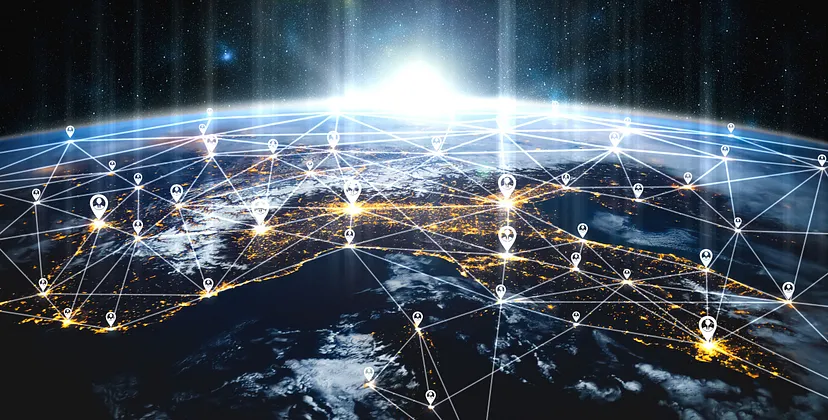
Introduction
The internet has become an integral part of our daily lives, and for many of us, it’s hard to imagine a world without it. However, not everyone has a deep understanding of how the internet works. Understanding how the internet works is important whether you’re having a tech background or not. For the common man, understanding the basics of the internet can help them navigate the web more efficiently and stay safe online. They can learn how to protect their personal information, avoid scams and phishing attempts, and troubleshoot common internet problems. Additionally, understanding how the internet works can also help the common man in their daily life, for example, how to use online services, how to access and share information, etc.
For IT professionals, understanding how the internet works is essential to their job. They need to have a deep understanding of the underlying technologies, protocols, and infrastructure that make the internet possible. This knowledge is crucial for troubleshooting, network security, and designing and maintaining network systems. Additionally, IT professionals can also use this knowledge to create new and innovative internet-based solutions for businesses and individuals.
This blog post will cover a variety of topics related to understanding how the internet works.
- The Basics of the Internet: We will start with a general overview of the internet, including its history, the way it works, and the different types of internet connections.
- Internet Infrastructure: We will explore the physical infrastructure of the internet, including data centers, servers, and routers, and how they all work together to keep the internet running smoothly.
- Internet Protocols: We will delve deeper into the technical side of the internet and discuss the various protocols that make it possible, such as TCP/IP, DNS, SSL etc.
- The World Wide Web: We will discuss the World Wide Web, including the history of the web, how it works, and more.
By the end of this blog post, you will have a comprehensive understanding of how the internet works.
The Basics of the Internet
History of the Internet
The internet has its roots in the Cold War era, when the US Department of Defense created a network called ARPANET in 1969 to connect its research facilities. Over the next few decades, this network evolved and grew to become the internet we know today. The World Wide Web, which is the system of interlinked hypertext documents that make up the internet, was created in 1989 by British computer scientist Tim Berners-Lee. Since then, the internet has grown exponentially, and today, there are over 5 billion internet users worldwide.
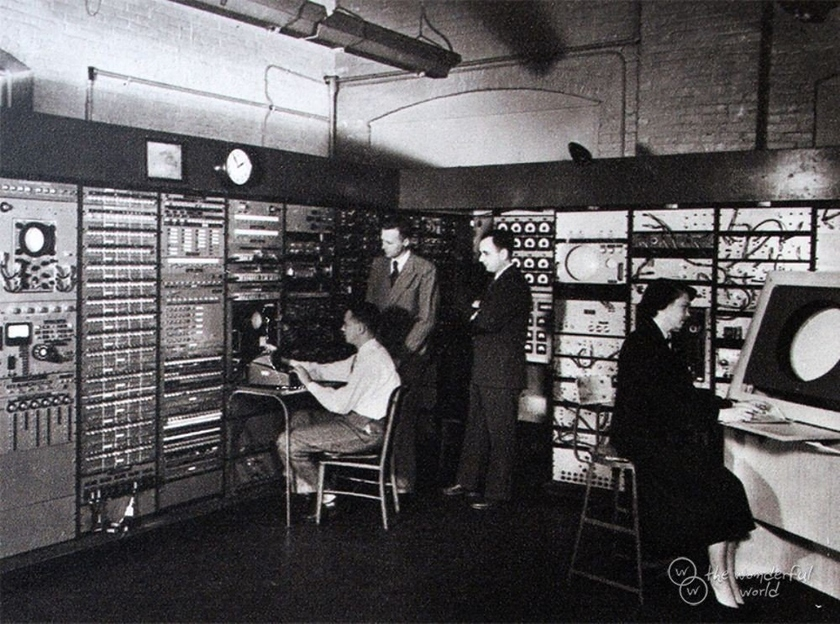
10/29/1969 in the USA there was the first data transmission between 2 computers within the ARPANET project.
How the Internet Works
The internet is a global network of connected computers and servers that communicate with each other using a set of protocols known as TCP/IP. These protocols govern how data is transmitted over the internet, and they are responsible for the smooth functioning of the internet. When you send an email, make a phone call, or visit a website, your computer or device sends a request to a server somewhere in the world, which then sends back the information you requested. This process happens in milliseconds, and it’s what makes the internet so fast and efficient.
Types of Internet Connections
There are several types of internet connections available today, and each has its own set of advantages and disadvantages. Some of the most common types of internet connections include:
-
Dial-up: This is the oldest type of internet connection and uses a telephone line to connect to the internet. It’s the slowest type of internet connection and is rarely used today.
-
DSL: Digital Subscriber Line (DSL) uses a telephone line to connect to the internet but is faster than dial-up. DSL is widely available and is a popular choice for home internet.
-
Cable: Cable internet uses the same cables as cable TV to connect to the internet. It’s faster than DSL and is widely available in urban areas.
-
Fiber: Fiber-optic internet is the fastest type of internet connection available today. It uses fiber-optic cables to transmit data and is becoming increasingly popular in urban areas.
-
Satellite: Satellite internet uses a satellite to connect to the internet and is available in remote areas where other types of internet connections are not.
-
Cellular: Cellular internet uses cellular networks to connect to the internet and is available through mobile phone plans. It’s becoming more popular as a way to connect to the internet on the go.
Simple Network
The Internet is a network of networks that allows computers to communicate with each other. When two computers need to communicate, they are linked together, either physically (usually with an Ethernet cable) or wirelessly (for example with Wi-Fi or Bluetooth systems). All modern computers can sustain any of these connections.

Such a network is not limited to two computers. You can connect as many computers as you wish. But it gets complicated quickly. If you’re trying to connect, say, ten computers, you need 45 cables, with nine plugs per computer.

To solve this problem, each computer on a network is connected to a special tiny computer called a router. This router has only one job: like a signaler at a railway station, it makes sure that a message sent from a given computer arrives at the right destination computer.
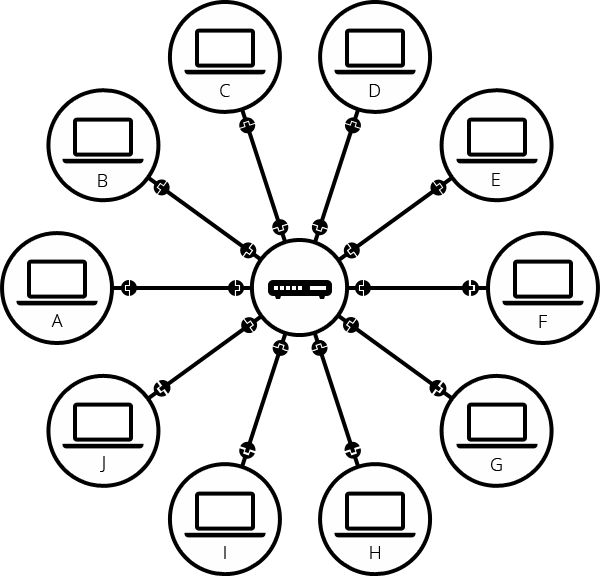
Network of Networks
By connecting computers to routers, then routers to routers, we are able to scale infinitely. This is the basis of the Internet, a network of networks that connects computers all over the world. However, connecting to the Internet is not as simple as connecting two computers. There are other networks out there, and to connect to them, we need special pieces of equipment such as modems and Internet Service Providers (ISP).
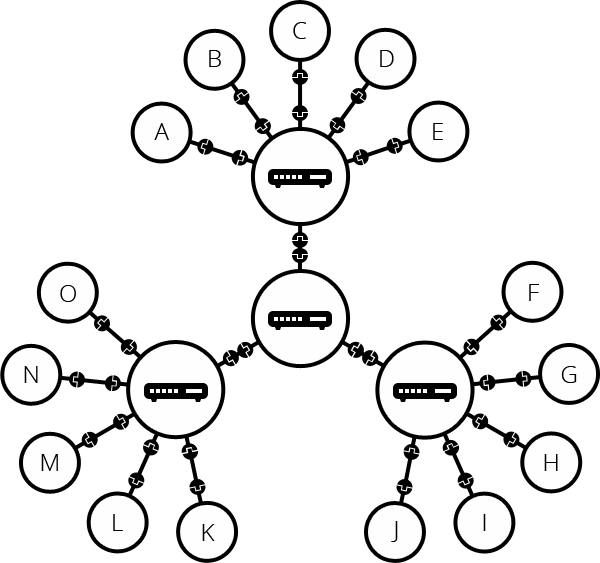
A modem turns the information from our network into information manageable by the telephone infrastructure and vice versa.

Internet Service Providers (ISPs) are companies that provide individuals and organizations with internet access. ISPs have infrastructure, such as servers and routers, that allows them to connect their customers to the internet. ISPs may provide access through wired connections, such as DSL or cable, or wireless connections, such as Wi-Fi or cellular data. ISPs also provide customers with IP addresses, which are necessary for devices to connect to the internet.
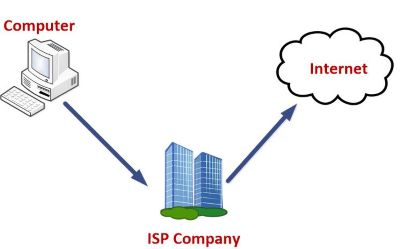
Internet Exchange Points (IXPs) are physical locations where ISPs and other organizations connect their networks to exchange internet traffic. IXPs are typically operated by neutral third-party organizations, and they provide a way for different networks to exchange traffic without having to pay transit fees to a third party. This can result in more efficient routing of internet traffic and lower costs for ISPs. IXPs also play a role in improving internet connectivity, by connecting ISPs with smaller networks to the global internet, providi\g more stable and faster internet for end-users.

The backbone of the Internet is made up of high-speed fiber-optic cables that span the globe, connecting data centers and other large networks across the world. These cables carry data between countries and continents at incredibly high speeds, allowing for fast and efficient communication.

These cables are made up of thin strands of glass or plastic, each no thicker than a human hair. Each strand is capable of carrying multiple signals at the same time using light waves, allowing for a much greater capacity than traditional copper cables.

Data centers are large facilities that house servers and other equipment used to store and distribute data. They are connected to the Internet backbone, and are responsible for hosting websites, applications, and other online services.
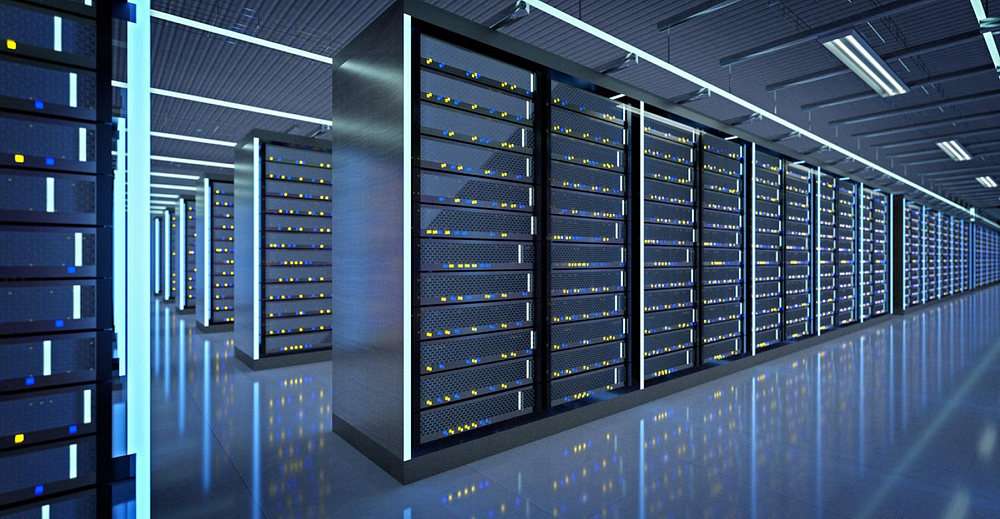
This is the infrastructure of networks that makes up the Internet.
IP Address
In order for computers to communicate on the Internet, they need to be able to find each other. This is done through the use of IP (Internet Protocol) addresses, unique numerical labels that identify each computer on the Internet. When a computer sends a message, it includes the IP address of the destination computer. Routers then use this IP address to route the message to the correct destination.
An IP address is made of a series of four numbers separated by dots, for example: 192.168.2.10.
That’s perfectly fine for computers, but we human beings have a hard time remembering that sort of address. To make things easier, we can alias an IP address with a human-readable name called a domain name. For example google.com is the domain name used on top of the IP address 173.194.77.104. So using the domain name is the easiest way for us to reach a computer over the Internet. The Domain Name System (DNS) is the phonebook of the Internet. Humans access information online through domain names, like google.com or twitter.com. Web browsers interact through Internet Protocol (IP) addresses. DNS translates domain names to IP addresses so browsers can load Internet resources.

Internet Protocols
The Internet relies on a number of key protocols to function. Some of the most important protocols include:
-
Transmission Control Protocol (TCP) — This is a transport-layer protocol that establishes a reliable connection between devices, and ensures that all packets are received and reassembled in the correct order. When a device sends data across the Internet, TCP divides the data into small packets, and assigns a sequence number to each packet. The receiving device then acknowledges the receipt of each packet, and requests retransmission of any packets that are not received correctly.
-
Internet Protocol (IP) — This is a network-layer protocol that is responsible for routing packets to their destination. Each packet is assigned a unique IP address, which is used to identify the source and destination devices. IP routers use routing tables to determine the best path for each packet to take as it travels through the Internet. The combination of TCP and IP allows for data to be transmitted and received reliably and efficiently across the Internet, regardless of the number of networks or devices involved in the transmission.
-
Domain Name System (DNS) — As discussed earlier, this protocol is responsible for converting human-friendly domain names (such as www.google.com) into IP addresses that devices can use to connect to servers.
-
Simple Mail Transfer Protocol (SMTP) — This protocol is responsible for sending and receiving email. It defines the format of email messages and the procedures for sending and receiving them.
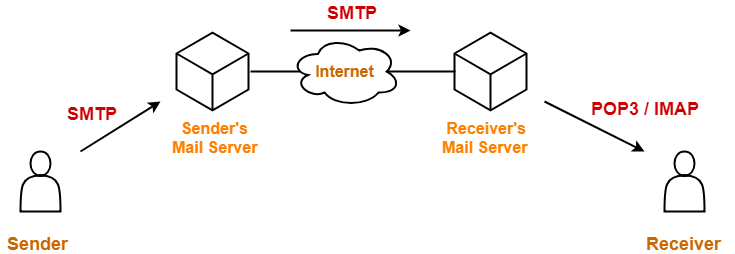
- File Transfer Protocol (FTP) — This protocol is used for transferring files between computers on a network. FTP is a standard network protocol used to transfer files from one host to another over a TCP-based network, such as the Internet.

- Hypertext Transfer Protocol (HTTP) — This protocol is the foundation of the World Wide Web and is used to transfer data from servers to clients (web browsers) and vice versa. HTTP is the protocol used to transfer data from web servers to web browsers and is the foundation of the web as we know it today.

- Secure Sockets Layer (SSL) and Transport Layer Security (TLS) — These protocols are used to secure communication over the Internet by providing encryption and authentication. They are commonly used to secure connections between web browsers and web servers, and are the foundation of the HTTPS protocol.
These protocols work together to enable the flow of information and communication across the Internet, allowing users to access and share resources and information globally in a secure way.
The World Wide Web
The Internet and the World Wide Web (WWW) are often used interchangeably, but they are actually two distinct yet related technologies.
As discussed earlier, the Internet is a global network of interconnected computers and servers that use a common set of protocols, such as TCP/IP, to communicate with one another. The Internet is responsible for the transmission of data between devices and networks, providing the infrastructure for communication and the sharing of information globally.
The World Wide Web, on the other hand, is a collection of interconnected documents and other resources, linked by hyperlinks and URLs. It is a way to access and share information on the Internet, and it is based on the HTTP (Hypertext Transfer Protocol) and HTML (Hypertext Markup Language) standards.
If you could recall from the introduction part, the World Wide Web was created in 1989 by Sir Tim Berners-Lee, while working at CERN (the European Organization for Nuclear Research). He proposed a way to access and share information on the Internet using hypertext links and URLs, which made it easy for users to navigate and find information. The web has grown rapidly since then, and it is now the primary way that people access and share information on the Internet. Websites, social media, online marketplaces, and other services have become integral parts of our daily lives and have changed the way we communicate, shop, and access information.
i.e.The Internet and the World Wide Web are two distinct yet related technologies that have changed the way we live, work and communicate. The Internet provides the infrastructure for communication, while the World Wide Web provides the means to access and share information on the Internet, which has led to many innovations and advancements in our daily lives.
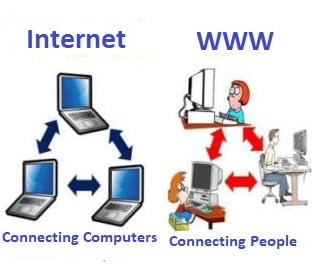
The World Wide Web (WWW) functions using a combination of URLs, HTTP, and HTML.
URLs (Uniform Resource Locators) are the addresses that identify the location of a specific resource on the web. They are used to access web pages, images, videos, and other types of content on the Internet. URLs consist of a protocol (usually HTTP or HTTPS), the domain name, and the path to the resource.
HTML (Hypertext Markup Language) is the language used to create and structure web pages. It consists of a series of tags and attributes that describe the content and layout of a web page. When a web server receives an HTTP request, it uses the information in the URL to locate the appropriate HTML file and sends it back to the browser in the HTTP response. The browser then uses the HTML to render the web page and display it to the user.
Search engines and browsers play a critical role in accessing the WWW. Search engines, such as Google, Bing, and Yahoo, allow users to search for specific information on the web by indexing and cataloging web pages, images, videos and other content. Browsers, such as Chrome, Firefox, Safari, and Edge, are software applications that allow users to access and view web pages by sending requests to web servers and displaying the results.
When a user enters a search query into a search engine, it returns a list of URLs that match the query. The user can then click on a link to access the web page associated with the URL. Browsers use the URLs to access the web pages and display the information.

In summary, URLs, HTTP, and HTML are the building blocks of the World Wide Web, and search engines and browsers are essential tools that allow users to find and access information on the web.
Conclusion
That’s a wrap. Now you’re aware of the basics of the internet, how the internet works, common internet protocols and the world wide web. I have tried to make it as simple as I could. If you found this blog helpful or have added any piece of information to your knowledge, share it with your friends who you think will find it useful.
Feel free to connect with me at abhishekkp.com/contact.